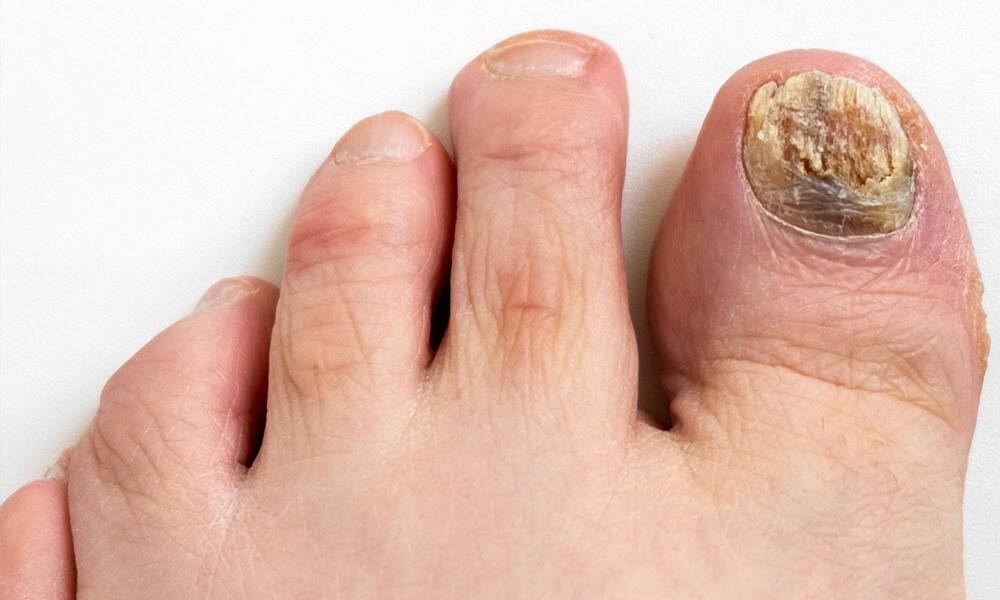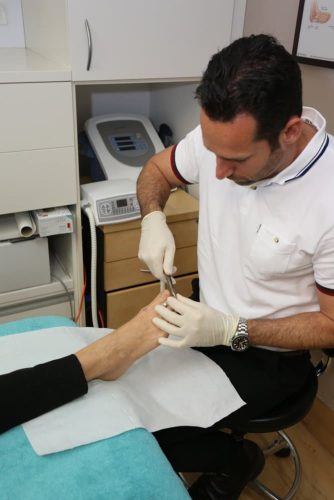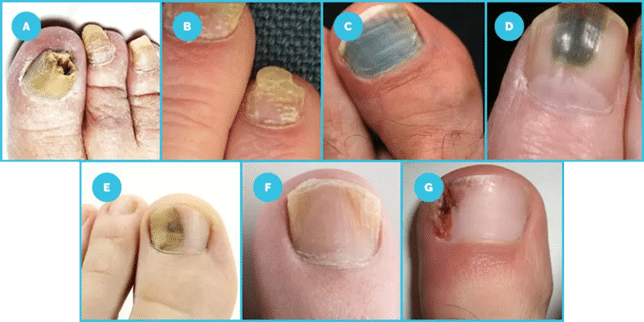Fungal Nail Infections
The Ultimate Guide
By Lance Penn - Senior Podiatrist

Fungus Among Us!
Ever gotten up close and personal with your toenails, only to recoil in horror at a discolored, thickened mess? You’re not alone, my friend. Fungal nail infections, also known as onychomycosis, are a common problem that can leave your feet looking unsightly and feeling uncomfortable. But fear not! As a podiatrist with over 20 years of experience battling these stubborn invaders, I’m here to equip you with the knowledge and tools to reclaim your healthy nails.

First things first: Understanding the Fungal Foe
Fungi are microscopic organisms that thrive in warm, moist environments. When they infect the nail it is called “onychomycosis”. They love our shoes, changing rooms, and even swimming pools. When they find a way under your toenail, they can munch away at the keratin, the protein that makes up your nail plate. This leads to a whole host of unpleasant symptoms:
- Discoloration: Your once-pristine nails might turn white, yellow, brown, or even black.
- Thickening: The infected nail can become thicker and crumbly, sometimes even detaching from the nail bed.
- Distortion: Fungal growth can cause your nails to become misshapen and uneven.
- Debris buildup: Underneath the infected nail, you might find a build-up of white or yellow debris.
- Pain: In some cases, the thickened nail can put pressure on the surrounding tissues, causing discomfort.
Ugh, sounds nasty! How did I even get this?
Fungal nail infections are contagious and can be spread in a few ways:
- Direct contact: Sharing shoes, towels, or nail clippers with someone who has the infection can increase your risk.
- Public places: Fungus loves damp environments. Walking barefoot in locker rooms, public pools, or showers can expose your feet.
- Minor injuries: A small cut or scrape in your toenail can create an entry point for the fungus.
- Certain medical conditions: Diabetes, a weakened immune system, and circulatory problems can make you more susceptible to fungal infections.
Okay, I think I have a fungal nail infection. What should I do?
Don’t panic! Here’s your battle plan:
- See a podiatrist: While over-the-counter antifungal creams might seem tempting, they often aren’t strong enough to penetrate the nail plate. A podiatrist can properly diagnose the infection and recommend the most effective treatment.
- Treatment options: Depending on the severity of the infection, your podiatrist might suggest oral antifungal medications, topical lacquers applied directly to the nail, or even laser nail treatment to target the fungus. To learn more read our article on the best 5 toenail fungus treatments
- Patience is key: Fungal nail infections are notoriously slow to heal. Treatment can take months, so be patient and consistent with your medication or appointments.
I'm treating it, but how can I prevent future battles?
Prevention is always better than cure! Here are some tips to keep those pesky fungi at bay:
- Practice good hygiene: Keep your feet clean and dry, especially between the toes. Wash them daily with soap and water, and dry them thoroughly.
- Wear the right shoes: Opt for breathable, well-fitting shoes that allow your feet to breathe. Avoid tight-fitting shoes and synthetic materials.
- Change your socks regularly: Especially after sweating or being in damp environments.
- Don’t share personal items: This includes shoes, towels, and nail clippers.
- Beware of public places: Wear shower shoes in public pools, locker rooms, and communal showers.
- Maintain healthy feet: Regularly trim your toenails straight across to avoid ingrown nails, which can create entry points for fungus.

Bonus tip: Address underlying conditions
If you have diabetes or a weakened immune system, talk to your Podiatrist about managing these conditions. This can help reduce your risk of developing fungal nail infections. Learn more about diabetes and your feet.
Remember: Fungal nail infections are treatable, but they require patience and proper care. By following the advice in this guide and consulting a podiatrist, you can say goodbye to those unsightly nails and hello to healthy, happy feet!








